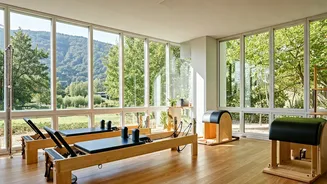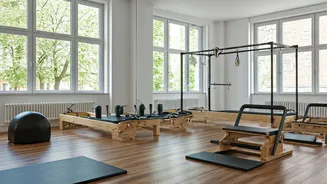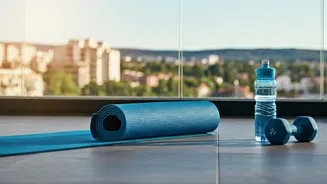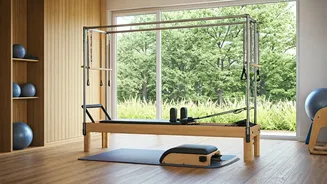Embracing Ageing
As we age, our bodies experience changes that necessitate adjustments to our fitness routines. High-impact exercises, which might have been manageable
in the past, may now pose challenges or increase the risk of injury. This shift highlights the need to find alternative exercises that are equally effective but gentler on the joints. Prioritizing low-impact activities becomes essential for maintaining a consistent workout schedule without jeopardizing physical well-being. This proactive approach involves understanding how the body responds to exercise at different stages of life, and adapting workout plans accordingly. It also encourages a shift in mindset, from pushing limits to embracing sustainable fitness habits that support long-term health.
Low-Impact Cardio
One of the recommended strategies is incorporating low-impact cardio exercises into your routine. These exercises, unlike high-impact ones, are designed to be easier on the joints. Options such as brisk walking, cycling, swimming, and using an elliptical machine offer effective ways to elevate the heart rate and burn calories without the jarring effect of jumping or running. Walking, for instance, is a readily accessible activity. Cycling is a good choice as it provides a cardio workout while being gentle on the knees. Swimming works the whole body and is especially beneficial for people with joint pain. An elliptical machine mimics the motions of walking or running without the impact. Each of these low-impact cardio exercises allows for sustained activity, enabling you to burn calories efficiently while minimizing the risk of injury.
Strength Training Moves
Strength training is a crucial aspect of a comprehensive fitness plan, particularly for those over 40. This type of exercise aids in preserving and increasing muscle mass, which often declines with age. It also helps boost the metabolism. Effective strength training can be achieved using a variety of methods, including bodyweight exercises, weight machines, or free weights. Basic exercises like squats, lunges, push-ups (modified as needed), and planks form the foundation of a strength training routine. Strength training not only builds muscles but also helps in strengthening bones and improving overall body composition. It's advisable to vary the exercises and gradually increase the intensity to continuously challenge the muscles and promote further improvements. It’s important to begin slowly and gradually increase weight or resistance to prevent injuries.
Flexibility and Balance
Flexibility and balance exercises are significant components of a balanced fitness regimen, often overlooked but exceptionally important, particularly with advancing age. Stretching exercises, such as yoga or Pilates, enhance flexibility by extending the range of motion in the joints and muscles. These practices reduce stiffness and improve posture, making daily activities easier and more enjoyable. They also help minimize the risk of injuries. Balance exercises, such as standing on one leg or using a balance board, improve stability and coordination, crucial for preventing falls and maintaining physical independence. Integrating these activities into your routine is relatively easy, with numerous online resources and classes available to guide you. Regular practice of flexibility and balance exercises will contribute to a more agile, resilient, and injury-resistant body.
Consistency is Key
Consistency is the cornerstone of any successful fitness journey, especially for individuals over 40. Regular exercise, even in smaller increments, is significantly more beneficial than sporadic, intense workouts. Aim for at least 30 minutes of moderate-intensity exercise most days of the week. This can be broken down into shorter sessions if that better fits your schedule. Listen to your body and incorporate rest days into your routine to allow muscles to recover. Monitoring your progress and making gradual adjustments is crucial. Consider consulting with a fitness professional or healthcare provider to develop a personalized workout plan that aligns with your specific needs and goals. Whether it’s walking, strength training, flexibility work, or a mix of these, consistent effort yields the best outcomes, fostering a healthier and more fulfilling lifestyle.












